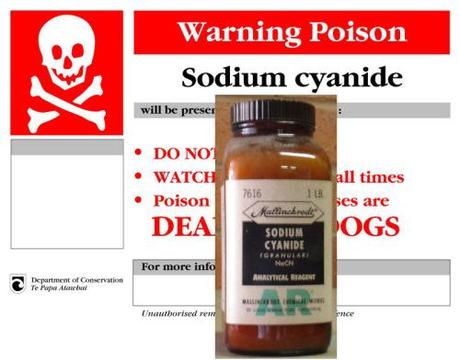 On July 9, 2013 at 10:40 pm, FOTM received this unsolicited email from katie in China <[email protected]>, with “reliable sodium cyanide supplier” as the email subject (Note: Spelling mistakes are in the email):
On July 9, 2013 at 10:40 pm, FOTM received this unsolicited email from katie in China <[email protected]>, with “reliable sodium cyanide supplier” as the email subject (Note: Spelling mistakes are in the email):
Dear Friend,
Have a nice day, knowing that you are looking sodium cyanide, we an supply that. specification as follwoing :
NaCN:98%min
NaOH:0.5% max
Na2CO3:0.5%
H2O%:0.5%
insoluable materrial :0.05%
package: 50/70kg/iron drum or 1T/wodden box
We are sincerely want to corporate with your respect company
Best regards
Katie
Cangzhou Chenghua Chemical Co., Ltd
No 216 Industrial Development Zone Yunhe district Cangzhou City
Tel:0086-311-87368842
Cyanide salts are among the most rapidly acting of all known poisons. This is what the CDC website says about sodium cyanide:
Agent Characteristics:
- APPEARANCE: White crystalline or granular powder.
- DESCRIPTION: Sodium cyanide releases hydrogen cyanide gas, a highly toxic chemical asphyxiant that interferes with the body’s ability to use oxygen. Exposure to sodium cyanide can be rapidly fatal. It has whole-body (systemic) effects, particularly affecting those organ systems most sensitive to low oxygen levels: the central nervous system (brain), the cardiovascular system (heart and blood vessels), and the pulmonary system (lungs). Sodium cyanide is used commercially for fumigation, electroplating, extracting gold and silver from ores, and chemical manufacturing. Hydrogen cyanide gas released by sodium cyanide has a distinctive bitter almond odor (others describe a musty “old sneakers smell”), but a large proportion of people cannot detect it; the odor does not provide adequate warning of hazardous concentrations. Sodium cyanide is odorless when dry. Sodium cyanide is shipped as pellets or briquettes. It absorbs water from air (is hygroscopic or deliquescent).
- METHODS OF DISSEMINATION:
- Indoor Air: Sodium cyanide can be released into indoor air as fine droplets, liquid spray (aerosol), or fine particles.
- Water: Sodium cyanide can be used to contaminate water.
- Food: Sodium cyanide can be used to contaminate food.
- Outdoor Air: Sodium cyanide can be released into outdoor air as fine droplets, liquid spray (aerosol), or fine particles.
- Agricultural: If sodium cyanide is released as fine droplets, liquid spray (aerosol), or fine particles, it has the potential to contaminate agricultural products.
- ROUTES OF EXPOSURE: Sodium cyanide can affect the body through ingestion, inhalation, skin contact, or eye contact.
Am I in a waking nightmare? Since when can Americans purchase a deadly poison via email?
~Eowyn

